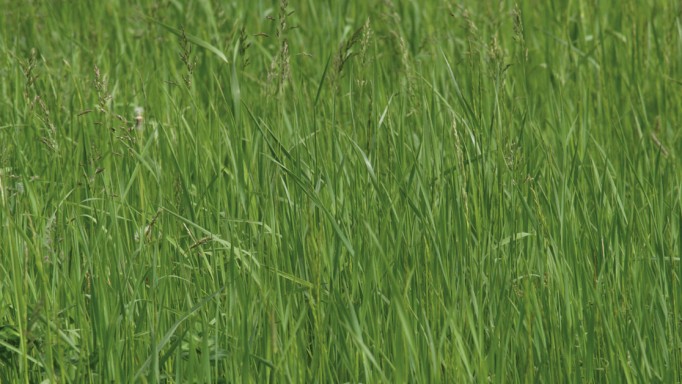Forage nutritional quality depends on the plant it is derived from. Grass hay (and pasture) is from grasses, and includes species such as timothy, orchardgrass or fescue. Legume hay is derived from legume plants, and includes alfalfa and clover. Typically, legumes tend to be higher in protein and calcium, and are slightly higher in energy (calories/kg) than grasses. For these reasons, horses with higher nutritional needs (lactating mares, growing horses) may be fed hay that has a higher proportion of legume in it, while horses with lower needs (lightly-worked horses, idle horses) are generally fed hays with a higher proportion of grass (if not 100% grass hay). Differences in nutritional value may also vary due to the cutting of the plant, as over a growing season plants may be cut up to three or four times during hay production. These differences, however, are small in comparison to differences due to plant type. Forages make up a large portion of a horse’s diet, and contribute significantly to the horse’s nutritional status, a factor that is often overlooked.
Good quality grass hay may provide all of the energy, protein, calcium, and phosphorus most horses need, depending on how much of it they eat. For example, a 500-kg horse in light work needs 20 Mcal of digestible energy, 699 grams of protein, 30 grams of calcium and 18 grams of phosphorus. If that horse were to eat 2% of its body weight (10 kg) of a typical grass hay, he would be getting 20 MCal of energy, 1000 grams of protein, 50 grams of calcium and 25 grams of phosphorus; more than meeting his needs for several nutrients. Many of his other mineral and vitamin needs would also be met, but tend to be highly variable, so it is suggested to offer a vitamin/mineral supplement to your horse if he is consuming only hay. If that same horse were to be fed the same amount in a legume hay (straight alfalfa, for example) he would be getting about 26 Mcal of energy (too much and he would gain weight), 2000 grams of protein (too much, which would need to be expelled in the urine, causing a smelly stall!), 150 grams of calcium and 27 grams of phosphorus. Thus, for such a horse, straight alfalfa would be a waste, both literally and economically. If your horse has higher needs, you could feed a mix of legume and grass, or offer some concentrate to make up for any nutrients not provided for in the hay.
Besides being the most important nutritional component of your horse’s diet, forage provides several other benefits. Forages are high in fibre (from the cell wall of the plant) and therefore provide a substrate for the microbial population in the horse’s large intestine. Not feeding enough fibre can cause disruptions to this ecosystem and can result in microbe death, potentially contributing to colic or laminitis. Legume forages, thanks to their high calcium content, have also been shown to help reduce the severity of gastric ulcers, although all forages offer some buffering benefit. Feeding forages also satisfies your horse’s innate ‘foraging’ behaviour. Forages typically take longer to eat than other feeds, thereby decreasing your horse’s chance of developing boredom-related stereotypies such as weaving or cribbing.
Forages offer the horse three key benefits – nutrition, gut health and natural foraging behaviour – and therefore should be considered the primary component of your horse’s diet. Forage quality may differ among plant species and should be chosen based on your horse’s needs, but remember that forage quality also depends on its cleanliness; that is, freedom from mold and foreign objects (such as dead mice!). Alfalfa hay may have high nutritional quality, but is not suitable for all horses, and grass hay, although lower in nutritional quality, is perfectly suitable for most horses.

